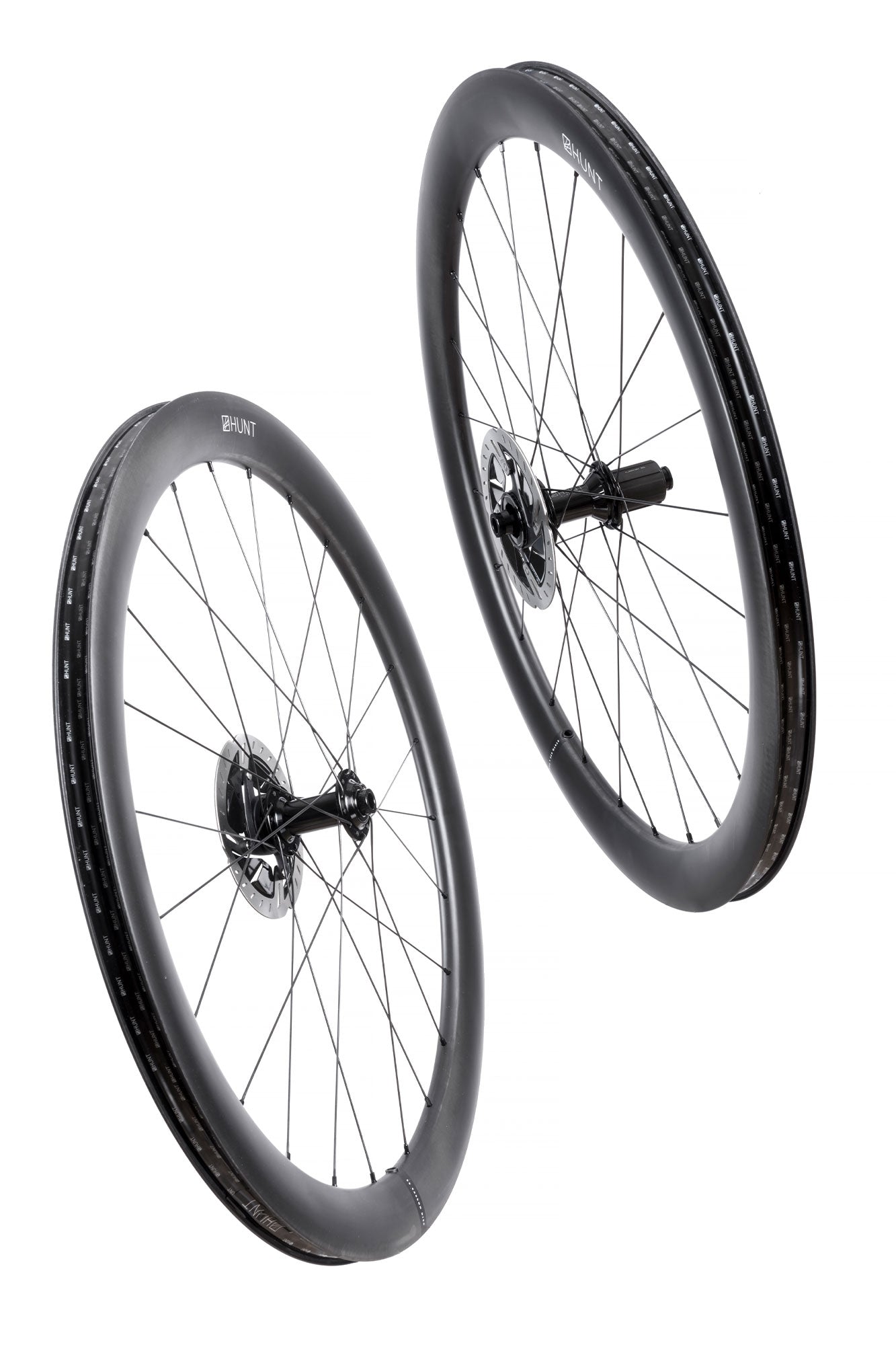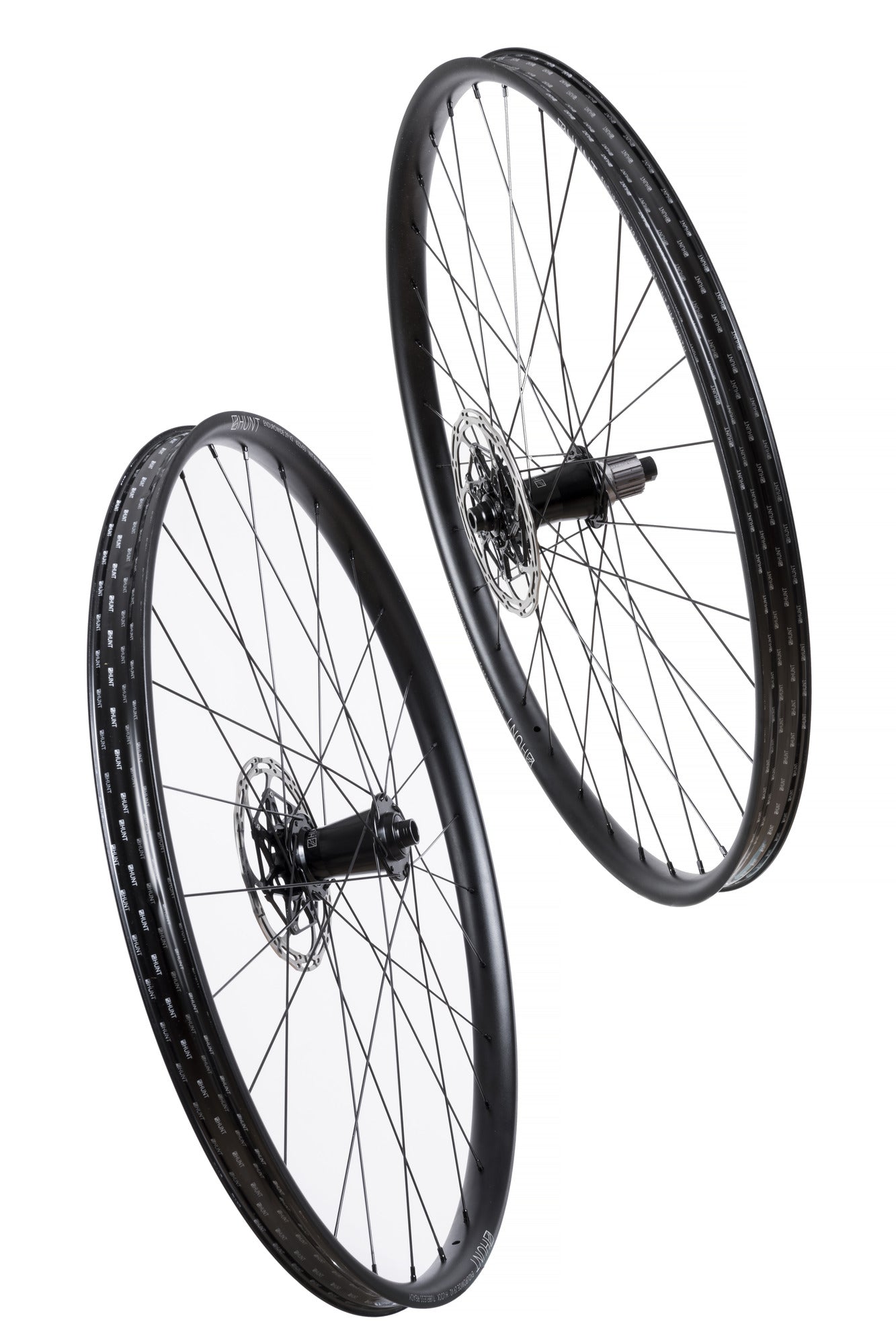Inside HUNT: The what, why and how of Impact Testing
Inside HUNT: The what, why
and how of Impact Testing
What is impact testing?
Impact testing is a test that simulates an impact on a rim in a lab setting.
Why do we impact test?
Impact tests are essential to developing all our road, gravel, or mountain bike wheels. They ensure the safety and strength of our rims so that we create wheels suitable for their purpose, from a strength point of view and to ensure the tyre is retained on the rim. We ensure all our wheels, meets and exceeds the impact test requirements stated in the ISO 4210-7.
For all our rims, we need to ensure the wheel has an acceptable failure mode, so that the rider can comfortably come to a stop at their own will or, preferably, be able to ride home. This test is highly important for our carbon rims to ensure the layup of carbon is high enough to ensure the rim is strong enough, whilst also meeting our weight target.
Impact testing helps us validate what our finite element analysis (FEA) simulations have predicted would happen in the event of a rim strike. We use this process to ensure our modelling is correct in the real world and to compare our latest developments with those of our close competitors.
We, of course, test our wheels in the real world with our riders across the UK, Europe and the USA, in varying terrains and across riding styles, but our lab setting allows us to perform consistent testing across wheels that simply isn't possible in the real world.
How do we impact test?
While impact testing is designed to test the strength and safety of our rims, we test a complete wheel so the spoke tension, angles and hub geometry is taken into account too.
Tyres are installed on the wheels, and we use an inner tube rather than tubeless, as the use of inner tubes is more consistent than tubeless and because it is simply cleaner and quicker to use. The tyres are inflated to a suitable pressure, and the complete wheel is installed on our test rig.
The test itself involves dropping a weighted, pointed anvil on the wheel at specified heights. After each impact, the wheel is checked for signs of damage. The area of impact is marked, and the wheel is rotated. The process is repeated until failure.
For road and gravel wheels we place the wheel vertically in the test rig and test initially at 40J and 50J for each respective wheel. This is our pass/fail criteria; if there is no damage, the wheel passes our initial test. We then test at 70J and 80J (respectively) to understand the failure mode of our wheels.
We test mountain bike wheels at 15 degrees (to the vertical) so the brunt of the force is focused on a single rim bead rather than spread across both. We can then better understand the strength of the rims flange/sidewall by angling the wheel slightly, compared to the vertical. It also means we do not need to test to such a high energy level, making it a little safer for us to test.
The energy level we test at for mountain bike wheels is dependent on the wheels use case, but we expect all our mountain bike wheels to survive a minimum of 100J. For riding use cases that are more aggressive, we increase this minimum energy level and then increase the energy level we expect failure to occur.
For carbon mountain bike wheels we stop testing at the first sign of damage and for alloy wheels, we stop when the rim has a significant dent to the flange and/or until 2 spokes are loose (this indicates spoke pull through or a significant flat spot).
Speaking of impacts, if a rider suspects that they have had a significant impact on their wheel when riding, we strongly suggest thoroughly inspecting the rim for damage to ensure it is safe to ride. Customers who are still determining what to look for are encouraged to either visit a local wheel specialist or contact our customer service team for advice.







